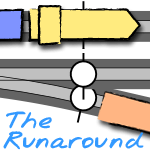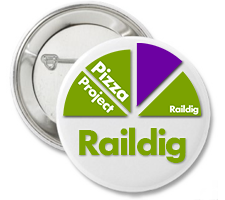Waterfront Project | Part 2
 After what may have been a bit of overthinking things (I do that occasionally) I’ve decided to make the Waterfront Project a shelf layout with switching capabilities and of course with an emphasis on the scenery. I’ve decided on a size of 48” long by 12” deep, a good size for a Z scale shelf scene.
After what may have been a bit of overthinking things (I do that occasionally) I’ve decided to make the Waterfront Project a shelf layout with switching capabilities and of course with an emphasis on the scenery. I’ve decided on a size of 48” long by 12” deep, a good size for a Z scale shelf scene.
For those that like to reference Z scale to HO scale pieces, this equates to a layout of approximately 10’ long by 2 ½’ deep in HO.
Two Z scale styles I enjoy are static dioramas and small operating desktop layouts. I like static dioramas because tight radius curves and scenic compression can be minimized or eliminated completely; I tend to build dioramas that show a realistically proportioned slice of the countryside in a static format.
Small desktop layouts I like because we get to run the trains! In a small desktop space we generally go with a continuous loop of track. The aspect of these layouts I find challenging is to breathe real character and interest into a self-contained, compact desktop format. I’ll use mountains, hills and trees to act as scenic dividers, even on a small layout, as they can add real depth and interest to a scene. Super elevating curves adds a subtle visual touch as well as making our trains run smoother on the tight radius curves that desktop layouts demand.
With these thoughts in mind I look to have the Waterfront Project layout bring elements of both layout styles together. While they are out there of course, we don’t see a lot of dedicated switching layouts in Z scale and the challenge of building one has me jazzed! The other opportunity a shelf switching layout presents is to learn about the basic concepts of this layout style including the basic terminology, operation and overall design.
To achieve the best outcome for this project I’ve asked noted layout designer, builder and author Lance Mindheim to comment on the Waterfront Project track plan and he’s very graciously agreed to have a look at the plan and offer his comments. Very cool!
With a shelf or switching layout comes some concepts not specific to this layout style but very important to its success. Since we’re not running out trains in loops, we need to make sure we can move and arrange on the layout. By considering the basic concepts of turnout positioning and runaround tracks we can design a track plan that won’t lock us into to clumsy operations. The illustrations above were inspired by Joe Fugate of Model Railroad Hobbyist.
Another important concept on a switching layout is the staging area or fiddle yard. The fiddle yard is what connects our track to the rest of the railroad, to the world beyond our layout. One definition reads that “If you imagine a stage with actors as the model, then the fiddle yard would be the wings where the actors prepare to go on.”
The fiddle yard is often hidden from view behind the layout or off to one side. The track to the fiddle yard can be disguised by going through a tunnel, building or behind high scenery. Another option is to leave the fiddle yard in plain view, as Lance Mindheim suggests in our previous interview, “it’s not always necessary to have a hidden fiddle yard. The fiddle yard serves two purposes. First, it represents the ‘outside” world, the imaginary continuation of the rest of the transportation system. Second, for those that run more than one train it allows place to store them before their run, much like airliners at an airport.”.
At the moment I’m planning for a semi-hidden fiddle yard on the Waterfront Project, perhaps placed behind tall trees and foliage. Our next article will show the track plan we’ve developed and we’ll see where that fiddle yard will be located!
Category: Z Scale Basics
















